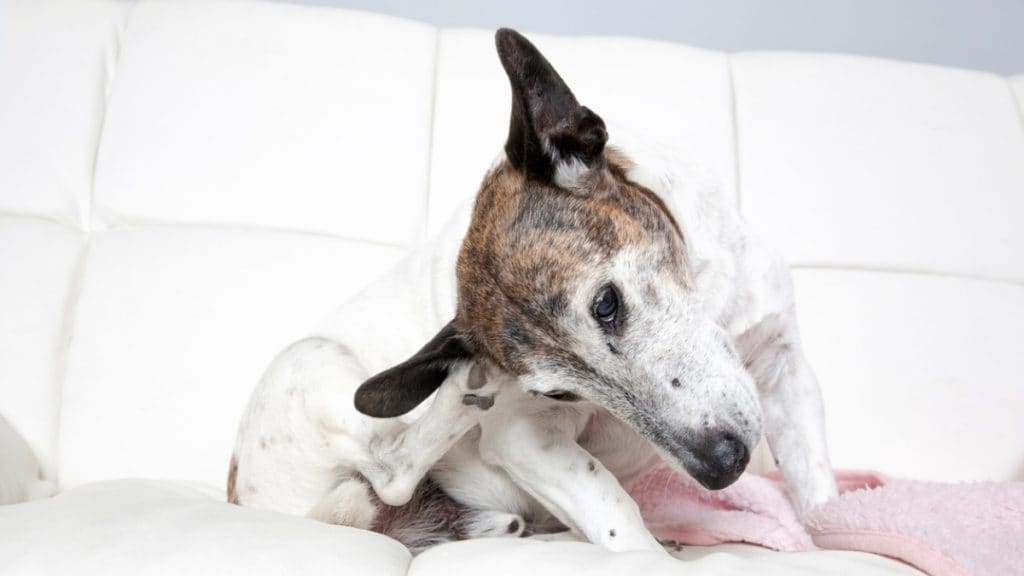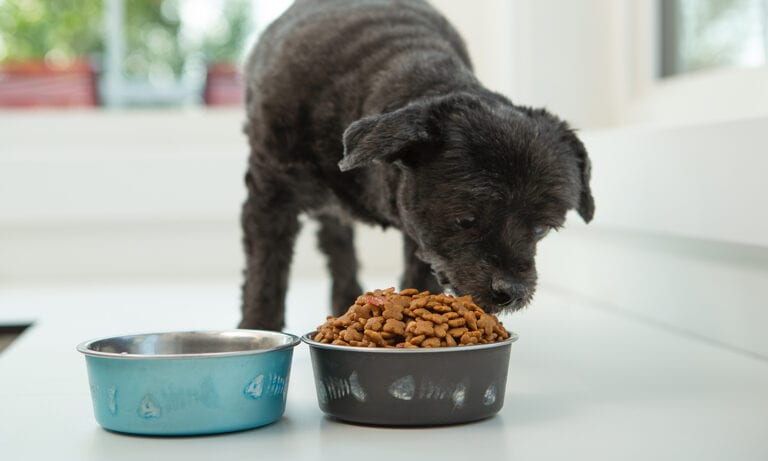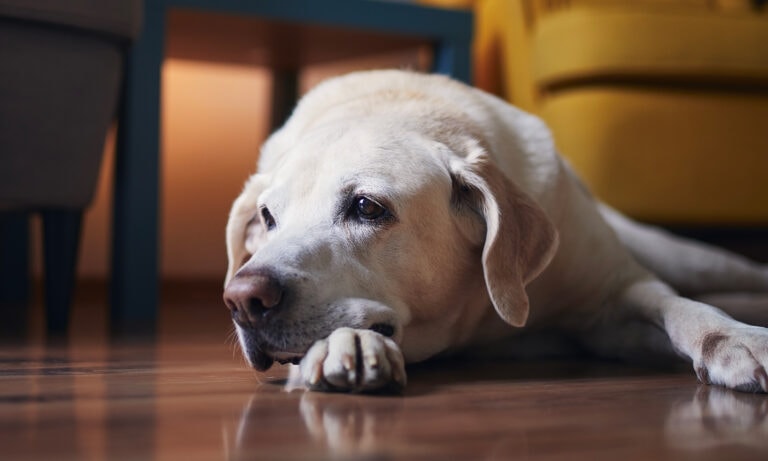I grew up in the Midwest—Ohio to be exact—in a family that loved dogs. And cats. And hamsters and fish, though not all at the same time. The Midwest afforded the luxury of a large backyard, followed by woods and a cornfield that all belonged to us—and what I imagine would be any dog’s dream. It’s a mind-boggling amount of land to me now that I live in a beach community in Southern California.
We had big dogs, little dogs (technically a toy dog) and medium-sized dogs over the years. Some were better behaved than others, but they were all loved.
Part of loving and caring for your dog is making sure they’re healthy. I’m pretty sure all of our dogs were extremely grateful to us for keeping away fleas, ticks and other pests from the time they were puppies all the way up to their senior years.
Why Are Fleas Such Pests For Older Dogs?
Fleas are like little vampires; they just love to feast on blood. They’ll take your or your dog’s blood, but it’s obviously easier to hide on your dogs because they are way hairier than you.
Fleas make people and dogs alike itch because they have an anti-coagulate in their saliva that prevents blood from clotting. This allows them to continuously gorge on their host’s blood.
I learned from Allison Habekost, DVM, with the San Clemente Veterinary Hospital in San Clemente, California, that many dogs have flea allergy dermatitis (FAD), which means not only do they itch from the bite itself, but also they’re allergic to the flea’s saliva.
Flea Prevention For Your Dog’s Senior Years
We were lucky. Giving our dogs their flea and tick medicine was pretty easy. We just slipped the tablet into a dog treat and down it went.
Once they grew older, giving them their medication required mashing it up more finely in a new soft treat, but that was the extent of any difficulties we had.
Where you live is a big factor in determining what method of flea prevention to use on your older dog. Because we lived in the Midwest where ticks in the woods were also a concern, we opted for a once-a-month tablet that prevented both fleas and ticks.
The same is true for dog owners in many other parts of the country with lots of wooded areas.
“It’s very important to treat for ticks as well as fleas in New Jersey, so the combination products [flea and tick prevention] are more important to us here,” says Douglas Cotler, DVM, with the South Brunswick Animal Hospital in Monmouth Junction, New Jersey.
In addition to Lyme disease, Cotler told me that there are more than 150 types of various tick-related diseases.
Today, there are multiple methods of flea prevention for you to choose for your senior dogs:
- Monthly tablets or pills
- Monthly chewy treats (This is the newest form on the market available only for dogs, according to Cotler)
- Collars that are effective for up to eight months
- Topical ointments, also called “topicals,” that are effective anywhere from one to three months, depending on the brand
Is it difficult for your senior dog to chew? If so, then you may want to go with the collar or a topical.
Remember, too, that just because your dog is older and may go outside less doesn’t mean he or she doesn’t need to be monitored for fleas. Flea prevention and control is just as important for senior dogs as it is for puppies or adult dogs.
“I think that a lot of people get in this mind-set that when dogs are young is when they need more flea control, “Habekost says. They might think that going to the dog park or potty training or playing outside puts dogs at more risk; whereas senior dogs are likely just go outside to go to the bathroom, so it’s not as big a concern.
How To Test To See If Your Senior Dog Has Fleas
Want an easy way to check and see if your older dog has fleas? Try this suggestion from Sheila Gomez, VMD, a dermatology expert in dogs and cats, with NorthStar VETS in Robbinsville, New Jersey.
- Buy a dog flea comb, which is a small comb, typically with metal teeth.
- Comb your dog along the middle of the back, moving toward the hips and also around the neck. Those are spots that fleas typically like best.
- If you see what looks like little grains of pepper, that’s flea dirt. Flea dirt is a euphemism for flea poop.
- If you’re not sure what you’re seeing is flea dirt, take what’s on the comb and put it on a damp paper towel.
- Let the comb sit for a minute. If you see rust color on the comb, it’s a strong indicator that your dog has fleas.
What To Do If Your Senior Dog Has Fleas
So let’s say you complete your damp paper towel and flea comb test and discover your poor senior dog has fleas. What should you do next?
Treat Your Dog And All The Other Animals In The Home
If you have other dogs or cats, chances are they may very well have fleas, too. Gomez recommends starting every pet with an oral medication that kills fleas within hours. Once you get all the animals under control with that initially, then you can move on to monthly prevention products.
Remember to only use cat supplies on cats and dog supplies on dogs. Incorrectly giving a dog flea medication to a cat could be deadly for the cat. Always read your labels carefully and follow the directions on the packaging.
With senior dogs that may have weakened immune systems, though, watch out for adverse reactions, Gomez warned. The most common, but rare, side effects include:
- Vomiting
- Skin irritation
- Hair loss at the site of irritation
- Diarrhea
“If you feel your dog is having an adverse reaction, go back to your vet and have your vet report it to the company. They may reimburse you for it,” Gomez says. “Because if there really is a problem, they want to know about it sooner than later.”
Treat The Environment
This means it’s time to do some deep cleaning around your home and maybe even call an exterminator, depending on how bad the flea infestation is.
Wash all the bedding, couch covers and pillows that the dogs and other animals lie on. Vacuuming and steam cleaning carpets is really important, Habekost said, because flea pupae are extremely hardy. They can lay dormant for up to 350 days.
(Quick lesson in the life cycle of a flea: Eggs become larvae, which turn into pupae that are little cocoon-like capsules that then transform into adults, which lay eggs, starting the cycle all over again.)
If you do decide to use flea bombs or exterminators, remember that some products may be toxic to pets, so remove pets from the home during that time.
Hopefully, though, you and your faithful older dog won’t have to go through all these steps if you are diligent in your prevention efforts.
By: Laura Lee Bloor
Share:









